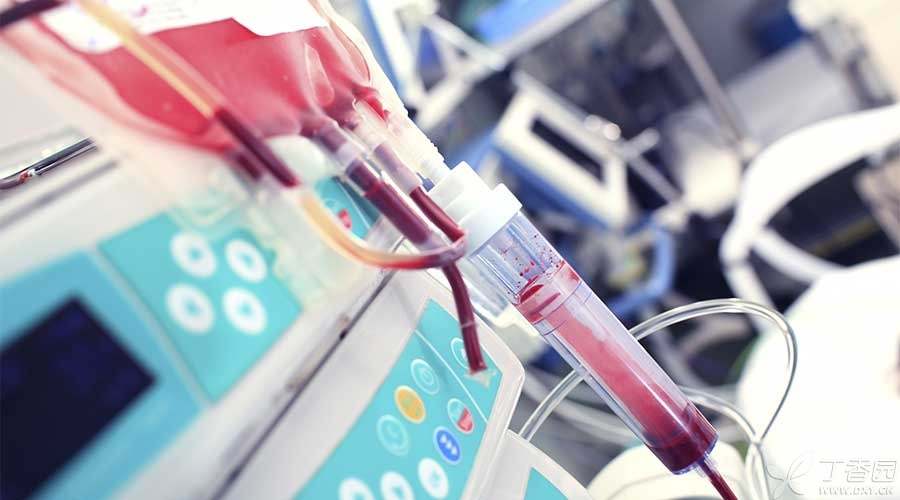
Blood transfusion is a common medical method.
Simply put, blood transfusion is needed when the blood volume of the human body is insufficient, which may cause damage to important organs and even endanger life. It is common in the following situations:
- Massive hemorrhage after trauma; Major surgery; Hemorrhagic diseases, such as massive hemorrhage of the upper digestive tract, hemophilia, etc.; Some diseases that destroy blood cells, such as hemolytic anemia, thrombocytopenia, etc.; Bone marrow dysfunction, especially when bone marrow cannot produce blood normally, such as aplastic anemia, etc.
Classification by blood source
Blood transfusion is divided into autologous blood transfusion and allogeneic blood transfusion.
For people with Rh negative blood type, it is safer to use self-blood transfusion.
Autologous blood transfusion is to store or collect one’s own blood and then input it into the body when surgery or needs it. Because the blood of the human body is constantly metabolized, after drawing a small amount of blood, the human body will supplement it by accelerating hematopoiesis. Besides, at ordinary times, some blood is stored in tissues and organs, so it will not affect health.
Autologous blood transfusion is safest:
- It can prevent infectious diseases related to blood transfusion and immune adverse reactions of blood transfusion. Avoid the error accident of transfusion of allogeneic blood; Rare blood group or special patients (IgM deficiency, etc.) are more suitable for autologous blood transfusion. Appropriate amount of autologous blood collection for many times can stimulate blood regeneration and accelerate hematopoiesis of postoperative patients. Relieve blood strain.
Classification by blood composition
Blood transfusion is divided into whole blood transfusion and blood component transfusion.
Step 1 Transfusion of whole blood
Blood is collected into a blood bag containing a blood preservation solution and is whole blood without any processing. Compared with blood component, whole blood has a larger volume and contains more complicated components. Therefore, in some cases, whole blood transfusion is not only unhealthy, but also has serious consequences.
At present, whole blood transfusion will only be considered in cases such as acute massive hemorrhage, heart surgery, exchange of blood, etc.
Step 2 Transfusion of blood component
Transfusion of blood component has the following benefits:
- The disease needs to be selected, Lack of what to lose to what, Improve the therapeutic effect. For example: Anemia erythrocyte transfusion, Granulocytopenia, thrombocytopenia, transfusion of concentrated platelets, Plasma transfusion for burn patients can reduce adverse reactions of blood transfusion and improve safety of blood transfusion. Because the input of unnecessary blood components is not only a waste, but also can cause adverse reactions of blood transfusion. It is convenient to store and use. Different blood components can be stored in different ways, such as fresh frozen plasma and cold precipitate for a long time can be stored for one year. Short-term such as platelets stored in a 22 ℃ oscillation box for 3-5 days can be used at any time. One blood is used for multiple purposes, Save blood. Blood comes from the selfless contribution of healthy people. Is a valuable resource, Dividing a bag of blood into various components can be used for various purposes to treat multiple patients. For example, a city donates 350,000 units of blood every year, and the blood component is 700,000-1 million units. Reduce blood transfusion infectious diseases. Because some pathogenic factors in blood are mostly hidden in white blood cells, cryoprecipitate and coagulation factors and other products, most blood transfusion patients do not need these components.
Modern blood transfusion therapy has generally entered the stage of using component blood transfusion, and whole blood is basically not used. The proportion of component blood transfusion is an important symbol of the modernization of blood transfusion therapy. At present, the proportion of blood component transfusion in the world has reached more than 90%, while the proportion of whole blood transfusion is less than 10%. Component blood transfusion has also been widely used in China, and the rate of component blood transfusion in Shanghai has reached more than 97%.
How is blood stored?
Blood banks collect blood from healthy volunteers. Volunteers usually undergo a series of assessments before donating blood, such as their recent health status, past illness history, whether they have traveled to epidemic areas, sexual life history, drug use history and acupuncture history (including tattoos). Only patients who pass the screening can donate blood.
The collected blood needs to be clearly defined in blood type and the detection of a series of blood-borne diseases should be improved. Once the collected blood has any risk of transmitted diseases, it should be discarded immediately.
Screened qualified blood is packaged and stored according to blood components such as red blood cells, platelets, plasma, etc. for later use.
Blood components usually fail after only a very short period of time and must be discarded. This is also why blood banks are often ischemic and healthy volunteers are encouraged to donate blood.
Why try not to lose fresh blood?
1. Various components of fresh blood have strong antigenicity and are easy to cause blood transfusion reaction.
2. There are a large number of surviving lymphocytes, increasing the risk of graft-versus-host disease.
3. Treponema pallidum can survive for 3 days at 4 ℃ in vitro, so the blood within 3 days is still possible to infect syphilis, and the blood beyond 3 days is safe instead.
4. If the purpose of blood transfusion is to supplement platelets and granulocytes, the blood within 12 hours is fresh, but the platelets and granulocytes contained are impure and not thick, which cannot achieve the therapeutic effect.
Therefore, transfusion of new blood does little harm and does not advocate transfusion.
Responsible Editor: Zhang Qing
Clove Garden is exclusively authorized and cannot be reproduced without permission.
